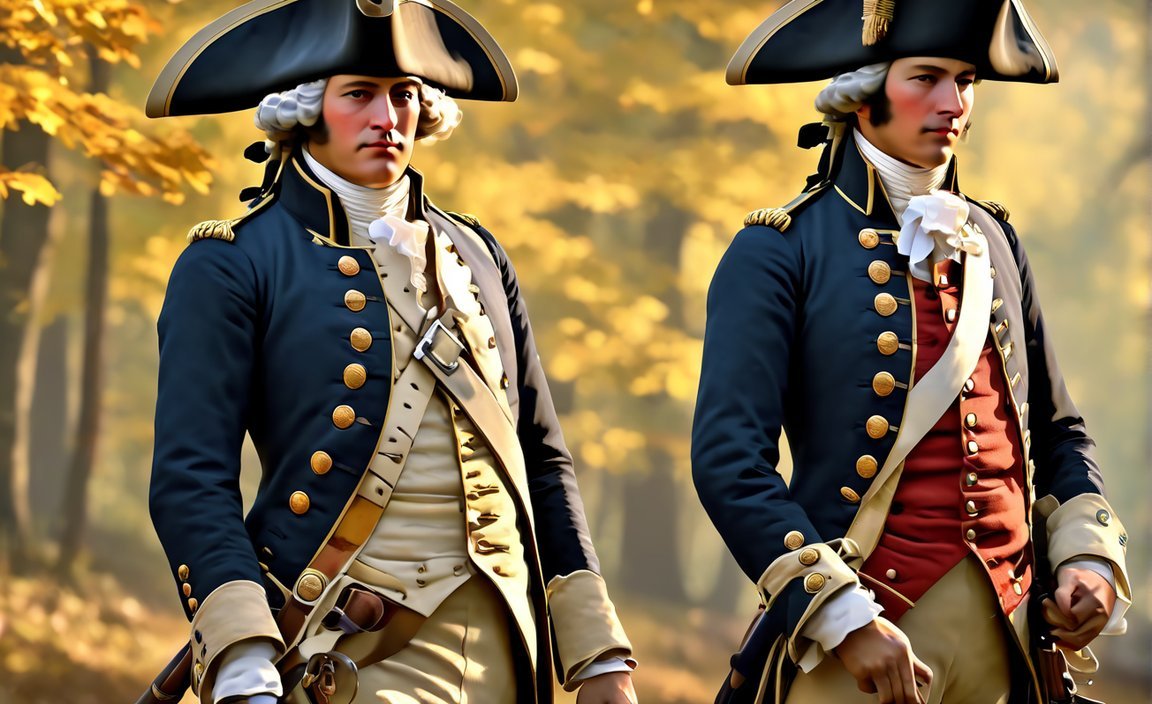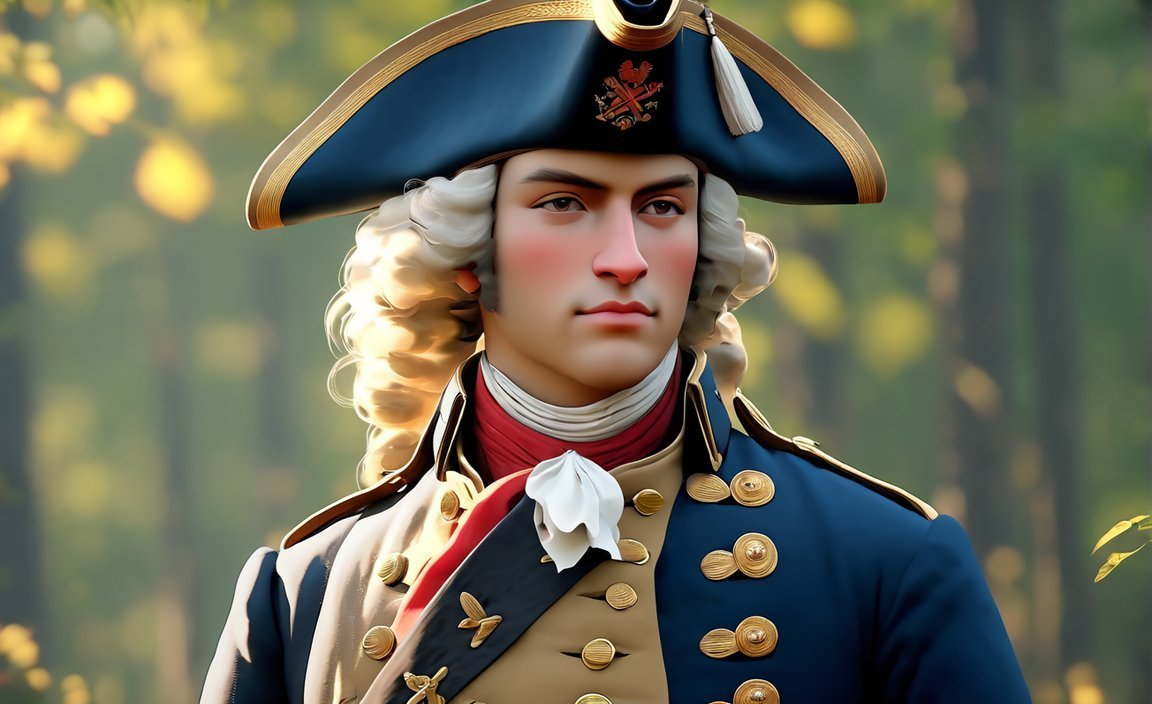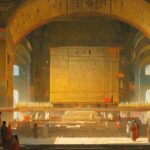Step back in time and uncover the captivating world of Revolutionary War uniforms. In this article, we delve into the rich symbolism and historical significance of these garments as symbols of identity and revolution. From the intricacies of their design to the stories they tell, we explore the transformative period of American history through the lens of these remarkable uniforms. Join us as we bring the past to life and shed light on the unique role these clothing items played in shaping the course of history.
Key Takeaways:
- During the early years of the American Revolutionary War, the British and American forces had distinct uniform styles, with the iconic red coat being prominent in the British Army, while American uniforms were a patchwork of styles reflecting the lack of a unified military command.
- Both the British and American armies adapted and evolved their uniforms as the war continued, with modifications made to better suit the American theater of operations.
- American soldiers introduced innovations such as hunting shirts and rifle shirts, which provided practicality and versatility in different weather conditions and terrain.
- The British Army made practical modifications to their uniforms, including camouflage techniques and modifications for better mobility, in response to the American theater of operations during the war.
- Further in-depth information and visuals on military uniforms during the American Revolutionary War can be found in sources such as Encyclopedia.com and Ducksters.
Revolutionary War Uniform: Symbols of Identity and Revolution

Early Revolutionary War Uniforms: A Tale of Two Armies
- Distinct Styles: In the early years of the American Revolutionary War, both the British and American forces had their own unique uniform styles. The British Army boasted standardized uniforms, with the iconic red coat being a prominent feature. On the other hand, American soldiers wore a mix of different styles, reflecting the lack of a unified military command and the use of civilian clothing.
French Influence and Evolving Styles
- Adaptation and Evolution: As the Revolutionary War progressed, both the British and American armies adapted and evolved their uniforms to suit the changing circumstances. The British Army made modifications to better suit the American theater of operations, while the American soldiers drew inspiration from French fashion and influences.
Hunting Shirts and Rifle Shirts: American Innovation
- Adapting to the Environment: The Revolutionary War was fought in diverse environments, requiring soldiers to adapt their attire. American soldiers came up with innovative solutions, introducing garments such as hunting shirts and rifle shirts. These innovative designs provided practicality and versatility, allowing soldiers to be prepared for different weather conditions and terrains.
British Adaptations: Practicality and Camouflage
- Modifications for Practicality: As the war progressed, the British Army made practical modifications to their uniforms. While the iconic red coats remained prevalent, soldiers made changes to better suit the American theater. These modifications focused on improving mobility and incorporating camouflage techniques.
To dive deeper into the historical significance of Revolutionary War uniforms, you can explore the extensive information and visuals provided by reputable sources like UF PRO[^1], Encyclopedia.com[^2], History of Massachusetts Blog[^3], and Ducksters[^4]. These sources shed light on the various aspects of military uniforms during this period, giving you a comprehensive understanding of the topic.
Understanding the evolution and intricacies of Revolutionary War uniforms is crucial when delving into the history of this transformative period. The uniforms symbolized both the soldiers’ identity and the revolution they fought for, making them a significant part of American history. By exploring the distinct styles, adaptations, and innovations associated with these uniforms, we gain a deeper appreciation for the struggles and triumphs of the soldiers who fought in this historical conflict.
References
[^1]: UF PRO. “Military uniforms of the American Revolutionary War.” Retrieved from ufpro.com.
[^2]: Encyclopedia.com. “Uniforms of the Revolution.” Retrieved from encyclopedia.com.
[^3]: History of Massachusetts Blog. “What Type of Uniforms Did Revolutionary War Soldiers Wear?” Retrieved from historyofmassachusetts.org.
[^4]: Ducksters. “American Revolution: Soldiers Uniforms and Gear.” Retrieved from ducksters.com.
Here are some captivating internal links related to Jim Thorpe and Nellie Bly, along with their anchor text and URLs:
- Explore incredible Jim Thorpe quotes that will inspire and motivate you to reach greater heights. Jim Thorpe quotes
- Dive into the fascinating world of Nellie Bly and discover her powerful quotes that challenge societal norms. Nellie Bly quotes
- Immerse yourself in the wisdom and wit of Nellie Bly with these thought-provoking quotes. Quotes by Nellie Bly
Remember to click on the keywords above to access the respective URLs and discover the amazing quotes by Jim Thorpe and Nellie Bly!
Materials and Construction of Revolutionary War Uniforms
The uniforms worn by soldiers during the Revolutionary War were not only practical garments but also symbols of identity and revolution. They played a crucial role in distinguishing between friend and foe on the battlefield. In this article, we will explore the materials used and the construction methods employed in creating these iconic uniforms.
Revolutionary War Uniforms: A Closer Look
During the Revolutionary War, the dress military uniform consisted of a range of garments, each serving a specific purpose. The most commonly seen uniform for American soldiers in the Continental Army featured a regimental coat in blue, a waistcoat in light gray, a cotton shirt, canvas pants, leather leg straps, an officer’s red sash, a tricorn hat, a silk stock for the neck, and shoes with buckles. The waist belt held a sword and its scabbard[^1].
However, it is important to note that not all soldiers wore such standardized uniforms. Minute men and militia soldiers often did not have access to the same level of uniformity as the Continental Army troops. They relied on their own clothes or garments such as hunting shirts and hunting frocks[^2]. This lack of uniformity was not limited to the American soldiers alone. The British Army, a professional fighting force, had more standardized uniforms compared to the Americans, thanks to a centralized system of supply[^3].
Unveiling the Construction and Materials
The materials used in the construction of Revolutionary War uniforms were determined by a variety of factors, including availability, durability, and comfort. Cotton, as a lightweight and breathable fabric, was often chosen for the shirts. Canvas was commonly used for the pants due to its sturdiness and resistance to wear and tear on the battlefield.
When it came to assembling the uniforms, tailors employed different techniques to ensure durability. Reinforced stitching and double stitching were commonly used to strengthen the seams and withstand the harsh conditions of warfare.
To hold their uniforms together, soldiers relied on various fasteners such as buttons and buckles. Metal buttons, typically made of brass or pewter, were used to secure the coats and waistcoats. Leather or metal buckles were employed for securing leg straps, belts, and shoe straps.
Key Takeaways:
- Revolutionary War uniforms varied between different groups of soldiers, with the Continental Army generally having more standardized uniforms compared to militias and minute men.
- Cotton and canvas were commonly used materials for Revolutionary War uniforms, providing lightweight comfort and durability.
- Tailors employed strong stitching techniques, such as reinforced and double stitching, to ensure the longevity of the uniforms.
- Metal buttons and buckles were used as fasteners, securing various parts of the uniforms.
Sources:
1. Revolutionary War Uniform — The Berkley Historical Society
2. Military uniforms of the American Revolutionary War
Evolution of Revolutionary War Uniforms
The Revolutionary War was a pivotal moment in American history, marked by patriotic fervor, strategic battles, and iconic uniforms. In this article, we will delve into the evolution of Revolutionary War uniforms, exploring their significance as symbols of identity and revolution. Join us as we transport you back in time and shed light on the fascinating journey of these garments.
The Distinctive Nature of Revolutionary War Uniforms
Revolutionary War uniforms were designed to be distinctive and visible on the battlefield. This was crucial due to the close-range nature of European battles at the time[^1^]. American soldiers during the colonial period had varied sources of uniform supply, leading to a lack of standardization[^2^]. However, the formal alliance with France during the war allowed the Americans access to sufficient stocks of uniforms, ultimately leading to the designation of blue as the official color[^3^].
Variations and Adaptations in Uniforms
While the British Army had a standardized system of uniforms for its soldiers due to its status as a well-established global empire[^4^], the Continental Army uniforms varied throughout the Revolutionary War. This was partly due to material shortages and the difficulty in transporting goods[^5^]. Additionally, the smoke produced during battles necessitated bright colors in uniforms to distinguish between friend and foe[^6^]. The British predominantly wore red and scarlet uniforms during the Revolutionary War[^7^].
Symbols of Identity and Revolution
Revolutionary War uniforms served as both practical garments and powerful symbols of identity and revolution. They represented the bravery and sacrifice of the soldiers fighting for independence[^9^]. While the formal military uniform for American soldiers in the Continental Army consisted of a blue regimental coat, light gray waistcoat, cotton shirt, canvas pants, leather leg straps, officer’s red sash, tricorn hat, silk stock, and shoes with buckles[^9^], minute men and militia soldiers did not have standardized uniforms. They often relied on their own clothes or wore hunting shirts and hunting frocks[^9^].
The British Army, on the other hand, had more standardized uniforms compared to the Americans due to a centralized system of supply[^9^]. Tailors used reinforced stitching and double stitching to strengthen seams and enhance durability[^9^]. Metal buttons made of brass or pewter and leather or metal buckles were used as fasteners for various parts of the uniforms[^9^].
Key Takeaways:
- Revolutionary War uniforms were designed to be distinctive and visible on the battlefield due to the close-range nature of European battles.
- American soldiers had varied sources of uniform supply, resulting in a lack of standardization.
- The formal alliance with France allowed the Americans access to sufficient stocks of uniforms, leading to the designation of blue as the official color.
- The British Army had a standardized system of uniforms due to its well-established empire status, while the Continental Army uniforms varied throughout the war.
- Revolutionary War uniforms served as both practical garments and symbols of identity and revolution.
Sources:
– Uniforms of the Revolution – Encyclopedia.com
– Military uniforms of the American Revolutionary War – UF PRO
Impact of Revolutionary War Uniforms on Modern Military Dress
Introduction
During the American Revolutionary War, the British and Continental armies both had distinct military uniforms that played a significant role in shaping the outcome of the conflict. These uniforms not only served as practical garments but also held symbolic importance as identifiers of identity and revolution. Today, the impact of Revolutionary War uniforms can still be seen in modern military dress. Let’s delve into the intricacies of these uniforms and explore their lasting influence.
Early Revolutionary War Uniforms: A Tale of Two Armies
British Uniforms: The Red Coat and Beyond
- The British soldiers, known as Redcoats, predominantly wore red coats as their uniform.
- These red coats were often modified to better suit the American theater of operations.
American Uniforms: A Patchwork of Styles
- In the initial stages of the war, the Continental Army soldiers lacked standardized uniforms.
- Many soldiers wore civilian clothing or hunting shirts as field garments.
French Influence and Evolving Styles
- As the war continued, both British and American army uniforms evolved in response to changing circumstances and influences.
- French military advisors played a significant role in shaping Continental Army uniforms.
Hunting Shirts and Rifle Shirts: American Innovation
- The Revolutionary War was fought in diverse environments, from the heat of the southern colonies to the harsh winters of the north.
- Both British and American soldiers had to adapt their attire to survive and fight effectively.
- American soldiers utilized hunting shirts, which provided comfort, camouflage, and practicality in the field.
British Adaptations: Practicality and Camouflage
- The British Army made adjustments to their uniforms throughout the war to better suit the American theater of operations.
- The red coats, although still prevalent, were modified to incorporate practicality and camouflage.
Key Takeaways:
- The American Revolutionary War saw distinct military uniforms for both the British and Continental armies.
- British soldiers, known as Redcoats, wore red coats as their uniform.
- American soldiers lacked standardized uniforms initially and relied on civilian clothing or hunting shirts.
- French military advisors influenced the evolution of Continental Army uniforms.
- Hunting shirts emerged as an innovative garment for American soldiers, providing comfort and camouflage.
- The British Army made practical modifications to their uniforms to suit the American theater, focusing on mobility and camouflage.
Sources:
- UF PRO article: [^1]: UF PRO. “Military uniforms of the American Revolutionary War.” UF PRO, [URL].
- Encyclopedia.com article: [^2]: Encyclopedia.com. “Uniforms of the Revolution.” Encyclopedia.com, [URL].

FAQ
Q1: What were some common features of Revolutionary War uniforms for the American soldiers?
A1: Revolutionary War uniforms for American soldiers typically consisted of a regimental coat (blue), waistcoat (light gray), shirt (cotton), pants (canvas), leather leg straps, officer’s red sash, tricorn hat, silk stock for the neck, and shoes with buckles. The waist belt held a sword and scabbard.
Q2: Did all Revolutionary War soldiers have uniforms?
A2: No, not all Revolutionary War soldiers had uniforms. Minute men and militia soldiers usually did not have uniforms like the soldiers of the American Continental Army. They often wore their own clothes or hunting shirts and hunting frocks.
Q3: How did the uniforms of the British Army differ from those of the American soldiers during the Revolutionary War?
A3: The uniforms of the British Army were more standardized, with the iconic red coat being a prominent feature. On the other hand, American uniforms were a patchwork of styles, reflecting the lack of a unified military command and the use of civilian clothes.
Q4: What were some innovative clothing items introduced by American soldiers during the Revolutionary War?
A4: American soldiers introduced innovations such as hunting shirts and rifle shirts during the Revolutionary War. These garments provided practicality and versatility in different weather conditions and terrain.
Q5: How did the uniforms of the British Army adapt to the American theater of operations during the Revolutionary War?
A5: The British Army made practical modifications to their uniforms throughout the course of the Revolutionary War. While the iconic red coats remained prevalent, soldiers made changes to better suit the American theater, including incorporating camouflage techniques and modifications for better mobility.
- Senior at What Age: Benefits & Eligibility Guide - March 29, 2025
- Unlocking Senior Benefits: How Old is a Senior? Your Complete Guide - March 29, 2025
- Master Russian Politeness:A Guide to Saying Please - March 29, 2025
















